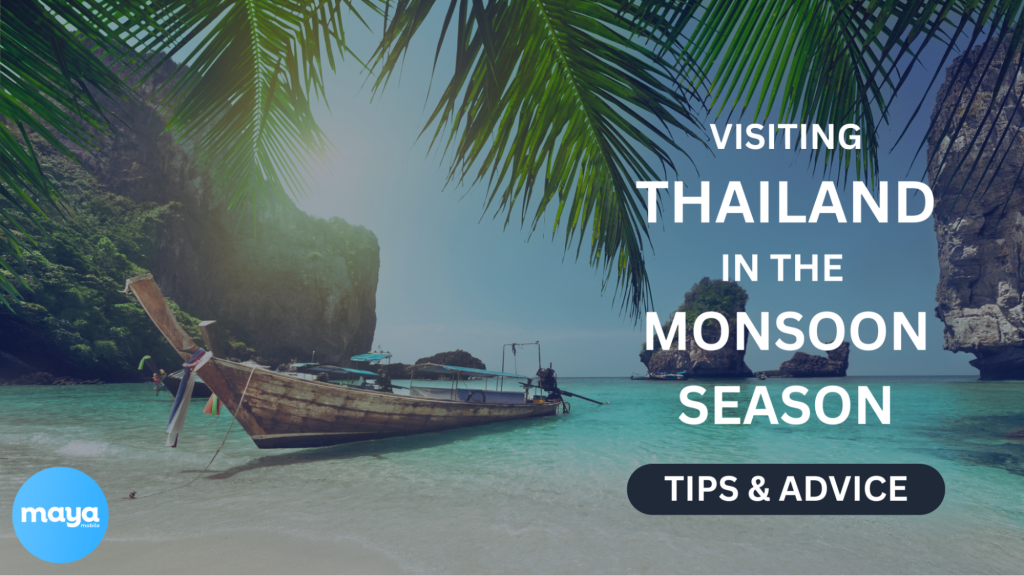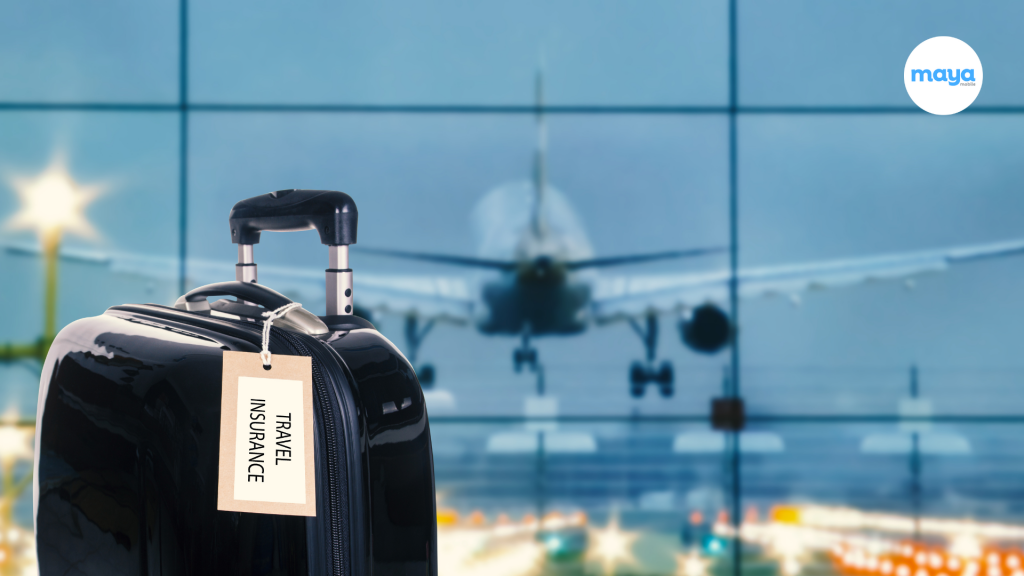“Is Cancun safe to travel?”
That’s the question nearly every traveler Googles before booking a trip, and for good reason.
Cancun is beautiful. But it’s also in the headlines. News reports, social posts, and word-of-mouth stories can leave you second-guessing whether the beach is worth the risk.
Here’s the thing most people miss: Cancun isn’t just one place. It’s a cluster of zones, some built for tourism, others not. And safety in Cancun isn’t about yes or no. It’s about knowing where you’re going, how you’re getting there, and what choices you make along the way.
After working with travel clients and watching thousands of tourist reviews, one pattern stands out: those who stay informed, plan wisely, and respect the local context rarely face serious issues.
In this post, we’ll break down Cancun safety from a traveler’s perspective, no fear tactics, no sugar-coating. You’ll get:
- A clear view of which areas are safest.
- The current risks you should actually care about.
- A real-world decision framework to evaluate tours, transport, and timing.
- Practical tips backed by local knowledge, not vague warnings.
Let’s cut through the noise and get into what traveling to Cancun is really like in 2025. Here’s what you need to know before you go.
Is Cancun Safe to Travel?
In 2023, Cancun had over 10 million international visitors, contributing to Mexico’s total of 42 million tourists. So, is Cancun safe to travel to? Yes, it is. Cancun’s safety is reinforced by strict security measures.
With only one entrance and one exit, authorities can easily control who enters and exits the city. The area is regularly patrolled by federal police, Navy personnel, and military forces, especially around popular tourist locations.
During busy seasons like Spring Break, extra police and military personnel are deployed to ensure public safety. Additionally, surveillance cameras and security dogs are stationed at key points like ferry piers to further prevent any illegal activities.
While petty crime, such as pickpocketing, may occur in crowded places, violent crime against tourists is rare in the main tourist zones. The combination of tight security, limited access points, and regular patrols ensures that Cancun remains a safe place for travelers.
High-Risk Areas in Cancun: Where to Be Careful?
While Cancun is generally safe for tourists, there are some areas and situations where you should stay alert.
Here are the places to watch out for:
Non-Touristic Areas
It’s best to avoid areas that are far from KM 0, where the Hotel Zone begins. Beyond this point, Cancun becomes more local and less focused on tourists. Areas like Malecon las Americas and Mercado 28 Flea Market are close to KM 0 but can be less secure, especially at night, with fewer tourists and less police presence.
Public Transportation
Stick to the Route 1 and 2 buses, which are safe and commonly used by tourists to travel between the Hotel Zone and KM 0. Avoid hailing taxis off the street. Instead, use “radio taxi” services to get a more regulated, reliable ride. Old or unmarked taxis may not be as safe.
Be aware that tensions between taxi unions and rideshare drivers have led to confrontations in recent years. Several tourists were injured during clashes in late 2024 and early 2025, and multiple drivers were arrested for threats and intimidation. The issue centers on unregulated taxis and union-related flashpoints, not every cab.
To stay safe, use hotel-arranged taxis, prepaid shuttle services, or app-based rides where legally supported. Avoid engaging with aggressive drivers or entering unknown vehicles, and always verify the credentials of your driver when possible.
Remote Beaches and Less-Visited Areas
While Cancun’s famous beaches are generally safe, some more secluded beaches, such as those in Isla Blanca or certain areas of Playa del Carmen, can be less secure. It’s best to visit these areas as part of a guided tour instead of exploring on your own.
Avoiding Illegal Activities
Getting involved with drugs or searching for them can lead to dangerous situations. Avoid places where illegal activities are happening to keep yourself out of trouble.
By sticking to popular tourist areas, using reliable transportation, and avoiding risky activities, you’ll have a safer and more enjoyable time in Cancun.
Safest Areas to Visit in Cancun
Safety is a top concern for any traveler. Cancun has well-patrolled areas where tourists can explore comfortably, and the Hotel Zone tops that list.
Here’s what you can expect in this secure, activity-packed district.
Hotel Zone
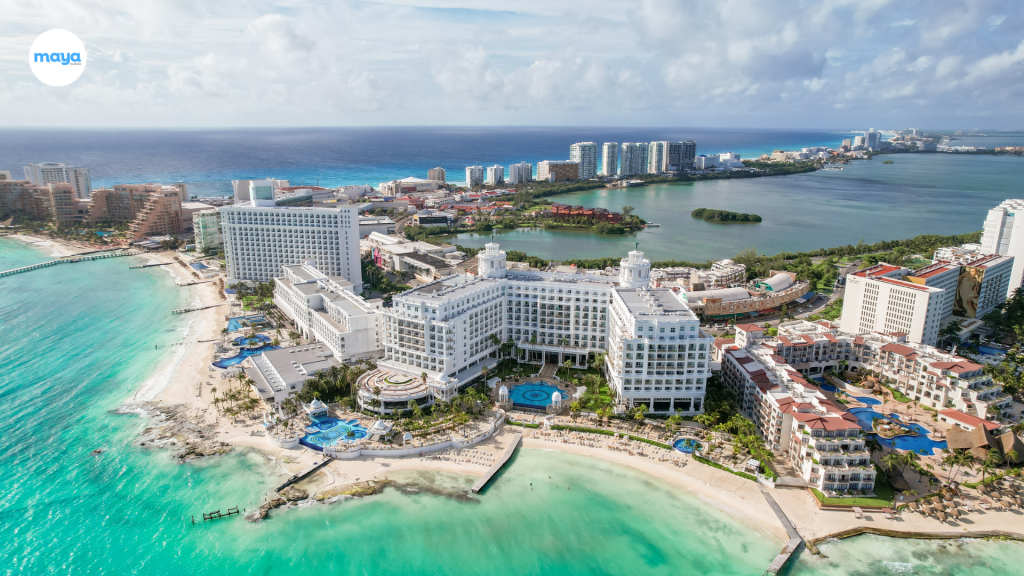

Cancun’s Hotel Zone is the heart of the city’s tourism, drawing millions of visitors each year. In fact, Cancun attracts over 10 million international tourists annually, and the Hotel Zone is where most of them head to enjoy a mix of shopping, dining, and exciting activities, all within a short distance from the beach.
What to see and do?
- La Isla Shopping Village: This lively shopping center is filled with luxury boutiques, casual stores, and an interactive aquarium. It’s perfect for a shopping spree, enjoying a meal, or spending time with family while enjoying beautiful views of the lagoon.
- Mayan Museum of Cancun: Discover Cancun’s rich history at this museum, home to a fascinating collection of Mayan artifacts. It’s an easy stop to dive into the culture and learn more about the region’s ancient past.
- AquaWorld: For those who love water sports, Aquaworld offers thrilling activities like jet skiing, scuba diving, and snorkeling. It’s the perfect place to explore the waters of Cancun and take on some fun water adventures.
- Coco Bongo: Cancun’s most famous nightclub, Coco Bongo, is a must-see for anyone looking for an unforgettable night out. With live performances, music, and dazzling shows, it’s a high-energy venue to experience Cancun’s nightlife.
Isla Mujeres
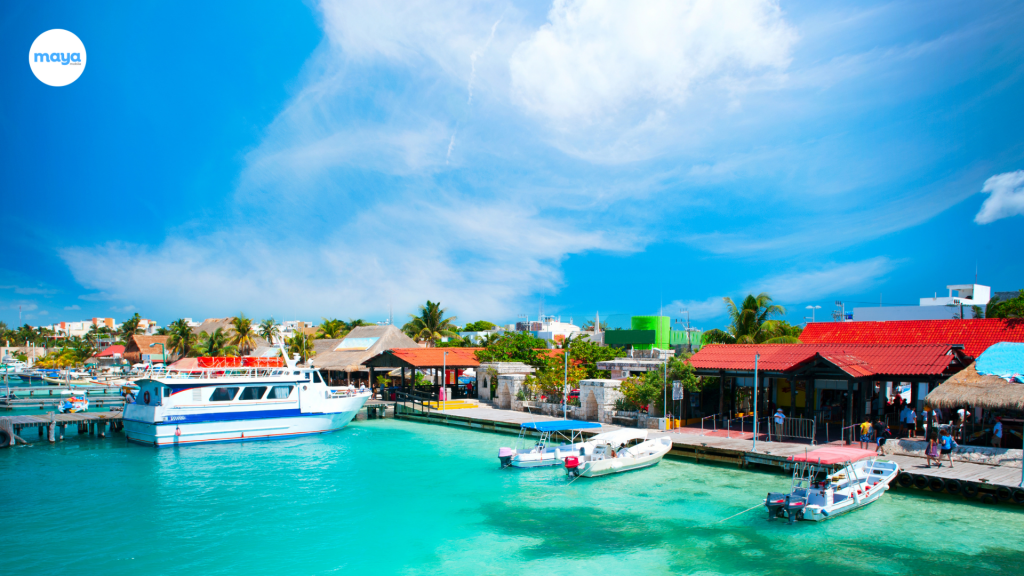

Just a short ferry ride from Cancun, Isla Mujeres is the ideal island getaway, known for its calm atmosphere, stunning beaches, and laid-back charm.
What to see and do?
- Playa Norte: One of the best beaches in the region, Playa Norte is known for its calm, shallow waters and soft sand. It’s perfect for swimming, lounging in the sun, or even kayaking.
- Underwater Museum of Art (MUSA): If you love the ocean, MUSA is a must-see. Snorkel or dive among over 500 life-sized sculptures submerged beneath the surface. It’s a unique experience that combines art and marine life in one.
- Punta Sur: Head to the island’s southern tip for stunning views of the Caribbean Sea. Here, you’ll find the El Farito lighthouse and a small Mayan temple. It’s a great spot for photos and appreciating the island’s natural beauty.
- Golf Cart Rental: Rent a golf cart and take a leisurely ride around the island. It’s the best way to explore, with hidden beaches, local eateries, and scenic viewpoints all waiting to be discovered.
- Turtle Sanctuary: Visit the turtle sanctuary on the island to learn about and support conservation efforts for sea turtles. It’s a great way to connect with nature and help protect these incredible creatures.
Also Read: How to Become a Digital Nomad and Work Remotely
Playa Delfines
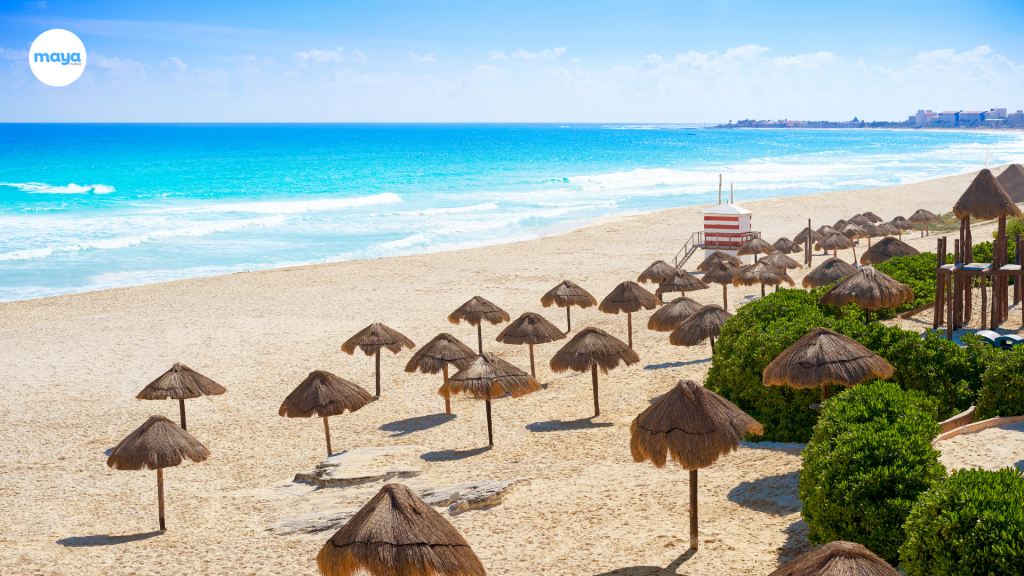

Located just outside Cancun’s Hotel Zone, Playa Delfines is a quieter, more peaceful beach perfect for those wanting to escape the crowds and enjoy a calm, relaxing day by the sea.
One of the first things you’ll notice is the Cancun Sign right at the entrance, making it an ideal spot for photos to capture the essence of Cancun. It’s the perfect place to kick off your day at the beach.
The beach itself offers plenty of space to spread out with soft, golden sand and clear, calm water. Whether you want to swim, sunbathe, or take a walk along the shore, Playa Delfines provides a perfect spot to do just that. The water is shallow and safe, making it a great choice for families with young children or for anyone looking to simply relax and enjoy the scenery.
You’ll also find vendors walking along the beach, offering cold drinks and snacks, like fresh coconut water, to keep you refreshed while you soak up the sun.
With breathtaking views of the turquoise waters, Playa Delfines offers a much-needed escape from the busier, more commercial beaches in Cancun. It’s a peaceful, beautiful spot to unwind and enjoy the natural beauty of the Caribbean.
Downtown Cancun (El Centro)
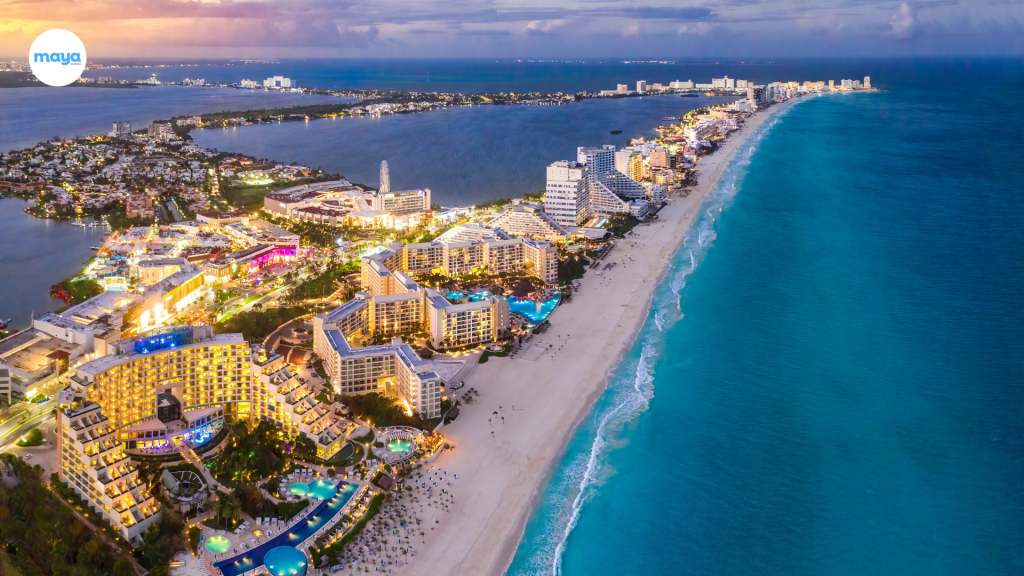

El Centro is where you’ll experience the true local life of Cancun. It’s a perfect place to explore the city beyond the typical tourist spots and get a feel for the everyday atmosphere.
What to see and do?
- Parque Las Palapas: Explore Parque Las Palapas, a lively park where locals gather to enjoy food, music, and street performances. It’s a great place to see the true spirit of the city, especially in the evenings.
- Avenida Tulum: It is another spot to check out, lined with local shops, cafes, and restaurants. It’s perfect for a casual walk, but be aware of your surroundings, especially if you’re unfamiliar with the area.
- Relish Street Food: Street food is a big part of Cancun’s local culture, and El Centro is the perfect place to try it. Grab tacos, tamales, or fresh fruit from food stands, or enjoy a meal at La Habichuela, known for its delicious Mexican seafood dishes.
El Centro gives you an authentic taste of Cancun, with a chance to experience the local culture and interact with the residents away from the more tourist-driven areas.
Costa Mujeres and Playa Mujeres
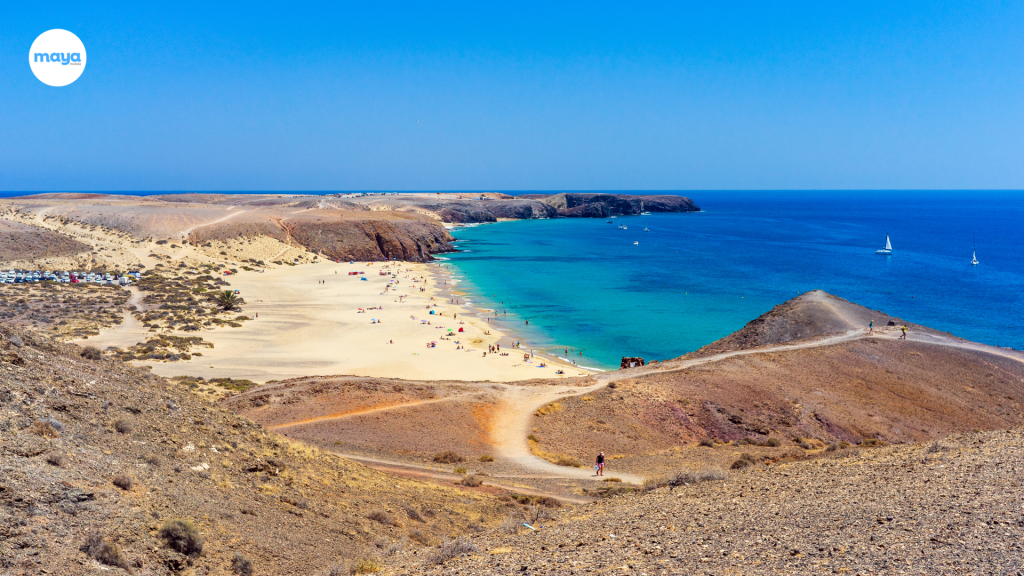

Costa Mujeres and Playa Mujeres are peaceful and serene spots, located just a short drive from the more crowded areas of Cancun. These areas offer beautiful beaches and a relaxing atmosphere.
What to see and do?
- Explore Playa Mujeres: It is famous for its luxury resorts and calm, clear waters. It’s a great spot for swimming, sunbathing, and relaxing. For golf lovers, the Playa Mujeres Golf Club offers a scenic course with ocean views.
- See Mayan Ruins Upclose: The El Meco Archaeological Site, located near Costa Mujeres, provides a quieter experience to explore Mayan ruins away from the crowds.
- Try Seafood: The area offers great seafood. Try Fonda La Catrina for authentic Mexican seafood dishes. Tacos de Suadero is a casual spot known for its local street food.
These areas are quieter and more peaceful than Cancun’s Hotel Zone, offering an opportunity to unwind and enjoy beautiful beaches, while still being close to the city’s main attractions.
Puerto Morelos
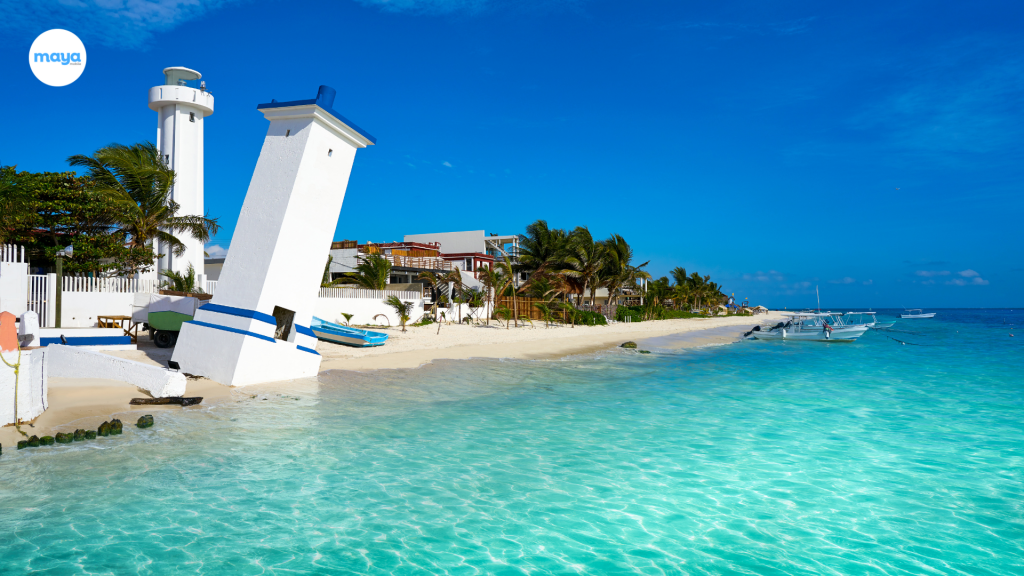

Puerto Morelos is a small, charming fishing village located between Cancun and Playa del Carmen, offering a relaxed and tranquil atmosphere, perfect for those looking to unwind.
What to see and do?
- Explore Underwater: The Puerto Morelos Reef is ideal for snorkeling and diving, part of the Mesoamerican Barrier Reef, which is the second-largest in the world. You can take a boat tour or dive to explore the vibrant underwater world. The town’s plaza is a cozy spot with local shops, cafes, and seafood restaurants. The Puerto Morelos Lighthouse is a symbol of the town and is great for photos.
- Enjoy Delicacies: Puerto Morelos is known for its fresh seafood. Head to El Merkadito for delicious dishes in a laid-back atmosphere. For a more casual bite, try Tacos.com for tasty tacos and other Mexican treats. Don’t forget to try the local paletas (popsicles) to cool off.
Puerto Morelos has a quiet charm and offers a peaceful retreat, perfect for enjoying beautiful beaches, diving into marine life, and exploring the relaxed town filled with local flavors.
Riviera Maya
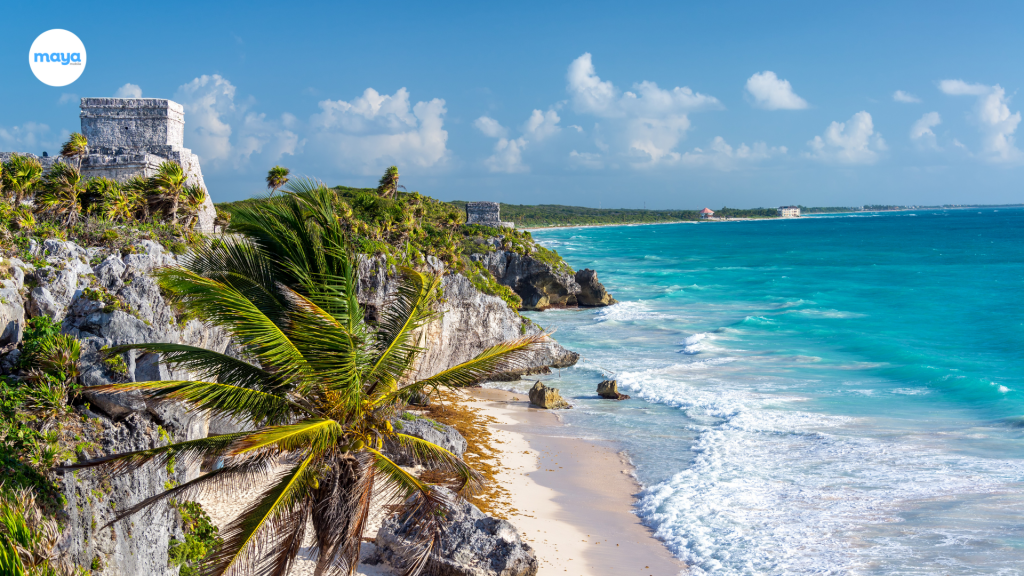

Riviera Maya offers a mix of soft beaches, crystal cenotes, and Mayan ruins that feel like time capsules. Start in Playa del Carmen, where Fifth Avenue buzzes with shops, food stalls, and music.
Day trips to parks like Xcaret or Xel-Há bring underwater rivers, snorkeling, and easy wildlife encounters. For something surreal, dive into Dos Ojos or Gran Cenote and swim through limestone chambers in water so clear it barely looks real.
At Coba, a climb up Nohoch Mul gives you panoramic jungle views and a sense of ancient scale. With rental cars and shuttles widely available, getting around is easy, especially from December to April when the weather is at its best.
Tulum
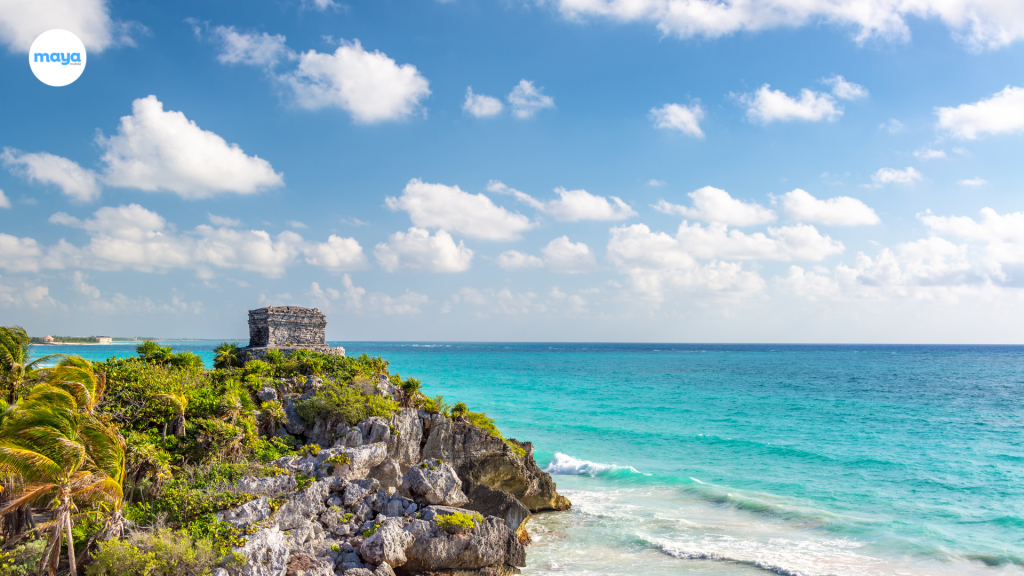

Tulum combines ancient history, relaxed beaches, and a free-spirited atmosphere that’s easy to fall in love with.
- Start at the ruins perched on the cliffs. El Castillo offers panoramic views over the Caribbean Sea, and just below, a narrow path leads to a small beach where you can take a dip after exploring.
- Head into town by bike, the most popular (and fun) way to get around. The main road is lined with smoothie bars, boutique shops, artisan stalls, and casual cafés that reflect the town’s boho energy.
- Explore the Sian Ka’an Biosphere Reserve if you’re in the mood for nature. A boat ride takes you through quiet mangroves where dolphins swim beside the bow and tropical birds glide overhead. It’s peaceful, immersive, and far less touristy than other excursions.
- Evenings in Tulum are magical. Many restaurants are tucked into the jungle, lit by soft lanterns and serving fresh ceviche, grilled seafood, and tropical cocktails. Whether you stay in a rustic eco-cabana or a polished boutique hotel, Tulum has options that suit every style.
The best time to visit? November through March offers the perfect balance of warm weather, dry skies, and smaller crowds.
Isla Holbox
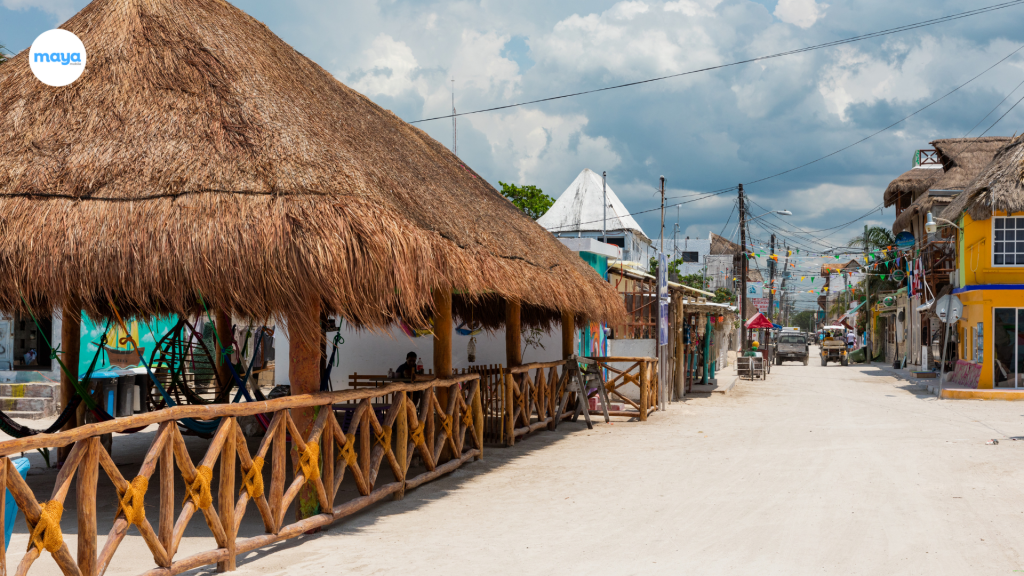

Holbox is a quiet, colorful island where life moves at a slower pace. Cars are replaced by golf carts, and sandy paths lead to painted walls, beach hammocks, and shallow sandbars where pelicans and flamingos roam freely.
From June to September, the island becomes one of the best places to swim alongside whale sharks in calm, warm waters. As the day winds down, sunsets turn the ocean pink while you relax with fresh coconut water.
Local menus focus on seafood, with favorites like lobster pizza and grilled fish. Dry, breezy weather typically runs from December through April.
Cozumel
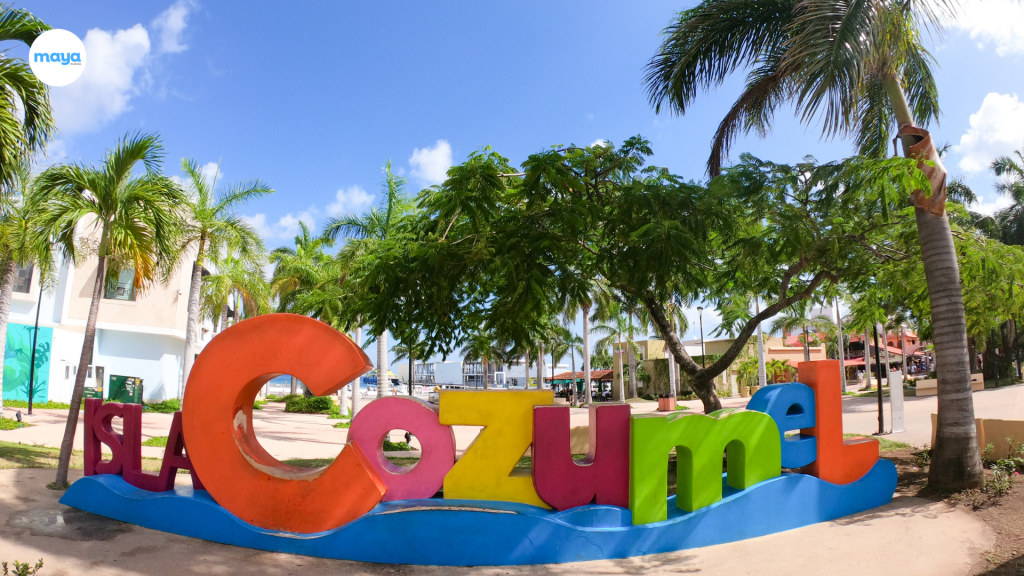

Cozumel is all about underwater beauty and relaxed island days. After a quick ferry from Playa del Carmen, you’ll find dive sites like Palancar and Santa Rosa Wall filled with coral gardens, turtles, and rays.
For something lighter, head to Playa Mia for paddleboarding or rent a golf cart to explore remote beaches on the east coast. Downtown San Miguel offers street food, local crafts, and lively cantinas, while the island museum gives you a deeper look into its Mayan and marine roots. November to April brings the best sea conditions and weather for both diving and beach time.
Cancun Travel Safety Tips
Traveling to Cancun can be a great experience if you’re aware of your surroundings and make smart choices. Below are safety tips designed to help you stay secure without feeling restricted during your trip.
Know Where It’s Safe to Be
Stick to areas designed for tourism. The Hotel Zone, Isla Mujeres, Playa del Carmen, and Tulum see a consistent security presence and are generally safe for travelers.
Avoid venturing into remote or unfamiliar neighborhoods, especially at night, unless you’re with a local guide or a trusted tour company.
Use the Right Transportation
Getting around is easy, but not all transport options are created equal:
- Pre-book airport transfers through your hotel or a certified provider.
- If using taxis, go through the hotel staff or official taxi stands. Avoid flagging random cabs on the street.
- Uber isn’t always reliable in Cancun due to local tensions with taxi unions. When in doubt, ask your hotel for advice.
- Rental cars are fine, but always use a GPS and don’t leave belongings in plain view.
Keep Your Belongings Safe
Petty theft and pickpocketing can happen in crowded areas:
- Don’t carry your passport when sightseeing. Keep a copy with you and the original locked in your hotel safe.
- Carry minimal cash, and use credit cards where possible.
- Keep bags zipped and in front of you, especially in busy markets or bus terminals.
- Don’t leave phones, wallets, or cameras unattended on tables.
Drinking and Nightlife Safety
Cancun has a vibrant nightlife, but it’s important to stay in control:
- Watch your drinks and never leave them unattended.
- Only accept drinks you’ve seen being prepared or opened.
- If you plan to party, do it with people you trust, and always have a plan for getting back to your hotel.
Watch What You Eat and Drink
Food in Cancun is generally safe, but here’s how to avoid an upset stomach:
- Drink only bottled or purified water (including for brushing your teeth).
- Avoid ice in drinks unless you’re sure it’s purified.
- Eat at places that look clean and have a steady flow of customers, busy restaurants often mean fresher food.
- Be cautious with street food if you’re not used to it.
Protect Yourself from the Sun
Sun and heat-related issues are more common than crime:
- Wear high-SPF sunscreen and reapply often, especially after swimming.
- Drink more water than you think you need.
- Avoid the sun during peak hours (12 pm-3 pm) or seek shade when outdoors.
Stay Connected and Informed
- Share your itinerary with someone back home.
- Keep your phone charged and carry a portable power bank.
- Save emergency numbers: 911 works in Mexico for police, fire, or ambulance.
- Check travel advisories and weather alerts during hurricane season (June to November).
Respect Local Rules
- Marijuana and other drugs are illegal in Mexico. Penalties are serious, even for small amounts.
- Avoid confrontations, especially with locals who seem aggressive or confrontational. Walk away and seek help if needed.
- Be courteous to law enforcement. If stopped, stay calm and cooperate. Carry a digital or paper copy of your passport and visa.
Emergency Contacts and Help in Cancun
Unexpected issues can arise even on the most well-planned trips. Here’s what to do and who to contact if you need help while in Cancun.
What to Do in Case of an Emergency?
- Stay calm and move to a safe location if you’re in immediate danger.
- Call 911 in Cancun for police, fire, or medical emergencies. Operators may not always speak fluent English, so be clear and direct.
- Contact your hotel front desk or concierge immediately. They can often coordinate with local services faster and provide translation support.
- For lost or stolen passports, arrests, or serious legal issues, contact your country’s embassy or consulate right away.
Local Emergency Numbers (Cancun, Mexico)
- General emergency (Police, Ambulance, Fire): 911
- Tourist Assistance Hotline (SECTUR): 078
- Federal Police (Highway emergencies): 088
- Cancun Red Cross (Cruz Roja): +52 998 884 1616
| Note: Cell phones with international plans or Mexican SIMs will work for these numbers. Most U.S. phones will connect directly to 911 in Mexico. |
Know About Cancun’s Natural Safety
Cancun is a top global destination, welcoming over 30 million international visitors to Mexico annually, with Cancun International Airport handling more than 25% of that traffic. While the area is well-developed for tourism, it’s still important to understand natural safety factors that may affect your trip.
Weather Risks: What You Should Know?
Cancun lies in the Atlantic hurricane belt. According to Mexico’s National Meteorological Service (SMN), the peak risk period is August to October, with an average of 12-18 named storms forming in the Atlantic annually.
- 2023 data: The region saw 7 tropical storms that caused heavy rain and flight disruptions, but no direct hurricane hits on Cancun.
- Hotels in Cancun are legally required to maintain emergency storm protocols, including evacuation plans and storm-resistant infrastructure.
- The chance of a direct hurricane hitting Cancun during your trip is statistically less than 1%, but tropical weather can still cause delays or activity cancellations.
What to do?
- Monitor weather updates on CONAGUA, NOAA, or hotel-provided alerts.
- Avoid beach and boat activities if strong winds or red flags are present.
Food and Water Safety: Real Risks and What’s Safe?
The CDC and U.S. State Department advise against drinking tap water anywhere in Mexico, including Cancun. Water purification infrastructure is still developing, especially outside resorts.
- Resorts and hotels use filtered or bottled water for cooking and ice.
- However, street vendors may use untreated water for ice, rinsing produce, or drinks.
Tip: Always drink sealed bottled water or use water purification tablets if traveling off-grid.
Foodborne illness stats:
According to the Mexican Ministry of Health, gastrointestinal infections from contaminated food or water are the #1 reason tourists visit local clinics. In 2022, Quintana Roo (the state where Cancun is located) reported over 35,000 foodborne illness cases, with peaks during the summer travel season.
Where to eat safely?
- Choose restaurants with visible hygiene standards, strong online reviews, and a high customer turnover.
- Popular chains, resort restaurants, and certified local spots are generally safe.
- Avoid lukewarm buffet trays, raw seafood from unknown vendors, and food carts with poor sanitation practices.
Staying Connected in Cancun: Why You Need an eSIM?
Reliable mobile service isn’t a guarantee once you leave your hotel. While most resorts offer Wi-Fi, coverage can drop quickly at beaches, cenotes, ferry terminals, or even busy tourist areas.
That is why many travelers use an eSIM like Maya Mobile. It gives you reliable data across Cancun and nearby spots like Tulum and Playa del Carmen. You do not need to visit a store or change SIM cards. Just scan the code and go online within minutes.
Maya Mobile works on most unlocked phones and gives you access to fast local networks. If you want a stress-free internet on your trip, Maya is a smart choice.
Related Reads
Frequently Asked Questions About Cancun’s Travel Safety
1. What is the safest vacation spot in Mexico?
Cancun consistently ranks among the safest vacation destinations in Mexico, especially in the Hotel Zone (Zona Hotelera), which is heavily patrolled and tourist-focused. Other safe destinations include Playa del Carmen, Tulum (in monitored areas), Los Cabos, and Puerto Vallarta. Always choose well-reviewed accommodations and follow local guidance.
2. Is it safe to walk around in Cancun?
Yes, walking around Cancun is generally safe, particularly in the Hotel Zone, main shopping areas, and beachfront resorts. These areas have a strong police presence and cater specifically to tourists. However:
- Avoid isolated streets at night.
- Don’t flash valuables.
- Use hotel-recommended transportation when traveling far from central areas.
3. Is Cancun safe now in 2025?
Yes, Cancun remains a safe and well-monitored destination in 2025. The local government continues to invest in tourist security, with dedicated tourism police, upgraded surveillance, and hotel zone checkpoints. As always, follow standard travel precautions, avoid risky neighborhoods, and stay updated with travel advisories.
4. What is the nicest part of Mexico to vacation in?
This depends on what you’re looking for:
- Cancun – For beaches, nightlife, and all-inclusive resorts.
- Tulum – For eco-luxury, boutique hotels, and cenotes.
- Puerto Vallarta – For a blend of beach and culture.
- San Miguel de Allende – For colonial charm and art.
- Los Cabos – For high-end resorts and dramatic landscapes.
Cancun remains one of the top-rated destinations for first-time travelers.
5. What is the safest place in the world?
While safety can depend on factors like crime rates, healthcare, and political stability, countries like Iceland, Switzerland, Finland, and Singapore often top global safety rankings. Cancun, while not the “safest in the world,” is one of the safest in Latin America for tourists when precautions are followed.
6. Why is Cancun so popular?
Cancun’s popularity comes from its:
- White-sand beaches and turquoise waters.
- All-inclusive resorts offering hassle-free stays.
- Nightlife and entertainment (clubs, bars, live shows).
- Proximity to Mayan ruins, cenotes, and natural parks.
- Affordable luxury, with direct flights from major cities.
It’s a destination that blends fun, relaxation, and culture in one place.
7. Where do the rich vacation in Mexico?
High-net-worth travelers often choose:
- Los Cabos (Cabo San Lucas & San José del Cabo) – For private villas and exclusive resorts.
- Punta Mita – An ultra-luxury coastal enclave near Puerto Vallarta.
- Tulum – For upscale eco-resorts and private beach properties.
- Cancun – Especially in private beachfront villas or luxury suites in resorts like Nizuc, Ritz-Carlton, or Secrets The Vine.
8. How expensive is Cancun?
Cancun can fit a wide range of budgets:
- Budget travelers: $60–$100 per day (hostels, buses, casual meals).
- Mid-range: $150–$300 per day (3–4 star hotels, excursions, nice dining).
- Luxury: $400+ per day (resorts, spas, private tours).
All-inclusive resorts simplify budgeting, but off-resort dining and tours can vary in cost. Taxis, imported alcohol, and beachfront clubs tend to be pricier.
9. Is Cancun safe from cartels in 2025?
Cartel activity in Cancun is mostly limited to disputes between groups and rarely affects tourists. The Hotel Zone and major tourist spots are under strong military and police surveillance. Avoiding non-tourist areas and using official transport keeps travelers out of harm’s way.
10. How safe is Cancun compared to other Mexican destinations?
Cancun is safer than many inland cities and maintains a strong security presence, especially in tourist zones. It shares a Level 2 travel advisory with places like Los Cabos and Puerto Vallarta. Compared to regions with active travel warnings, Cancun remains a more secure choice for travelers.


